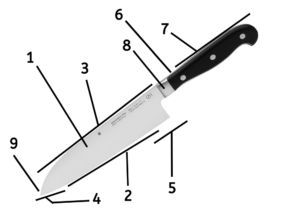Fruits and vegetables are vital components of a healthy diet, providing essential vitamins, minerals, fiber, and antioxidants that can help reduce the risk of chronic diseases. Their versatility in the kitchen allows for a broad range of culinary uses, from simple fresh eating to complex dishes. Here’s a comprehensive overview of these nutritious and flavorful foods.
Key Nutrients in Fruits and Vegetables
Vitamins:
- Vitamin C: Found abundantly in citrus fruits, strawberries, bell peppers, and leafy greens. It is essential for the growth and repair of tissues in all parts of your body and acts as an antioxidant.
- Vitamin A: Available in two forms in foods; preformed vitamin A found in animal products and provitamin A found in plant-based sources. Carrots, sweet potatoes, and spinach are rich in beta-carotene, which the body converts into vitamin A. It is crucial for vision, immune function, and skin health.
- Vitamin K: Critical for blood clotting and bone health. Leafy greens like kale, spinach, and broccoli are excellent sources.
Minerals:
- Potassium: Helps maintain electrolyte balance, muscle contractions, and nerve signals. High levels are found in bananas, oranges, cantaloupe, and sweet potatoes.
- Iron: Crucial for the creation of hemoglobin, which carries oxygen in the blood. Spinach, legumes, and dried fruits are good plant-based sources.
- Magnesium: Involved in over 300 biochemical reactions in the body, including energy creation and protein synthesis. Avocados, nuts, and legumes are rich in magnesium.
Fiber:
- Helps regulate the body’s use of sugars, helping to keep hunger and blood sugar in check. Apples, berries, oranges, and carrots, as well as most vegetables, provide dietary fiber, which can improve digestive health and reduce the risk of chronic diseases such as type 2 diabetes and heart disease.
Antioxidants:
- Substances that can prevent or slow damage to cells caused by free radicals, thereby reducing oxidative stress and inflammation. Berries, apples, artichokes, and beans are high in antioxidants like flavonoids and anthocyanins.
Phytonutrients:
- Compounds that have health-protecting qualities. Though not essential nutrients, they can have antioxidant and anti-inflammatory effects. Examples include lycopene in tomatoes, lutein in kale and spinach, and quercetin in apples and onions.
Health Benefits
- Chronic Disease Prevention: Regular consumption of a diverse array of fruits and vegetables is linked to a decreased risk of many lifestyle-related health conditions. They can lower blood pressure, reduce the risk of heart disease and stroke, prevent some types of cancer, lower risk of eye and digestive problems, and have a positive effect upon blood sugar, which can help keep appetite in check.
- Weight Management: Fruits and vegetables are naturally low in fat and calories. High fiber content in these foods increases satiety, helping to manage weight effectively.
- Skin and Hair Health: Vitamins A and C are vital for healthy skin and hair. Vitamin C aids in the production of collagen, while Vitamin A helps skin glands make sebum, which moisturizes the scalp and keeps hair healthy.
Tips for Maximizing Nutritional Intake
- Eat a Variety: Each fruit and vegetable offers a different mix of nutrients, fibers, and antioxidants. Diversify your diet to get a broad spectrum of nutrients.
- Consider Preparation Methods: Cooking methods can affect the nutritional content of fruits and vegetables. For example, steaming or grilling are often preferable to boiling, which can leach nutrients into the water unless the cooking water is consumed.
- Incorporate Them in All Meals: Use fruits and vegetables as snacks, add them to salads, use them in cooking, and incorporate them into smoothies.
Types of Fruits
Fruits are a diverse group of foods, cherished not only for their taste and nutritional value but also for their vast variety and versatility in culinary applications. Here’s a detailed breakdown of different categories of fruits, including their characteristics and uses.
About Berries
Characteristics: Berries are small, soft, round fruits, typically bright in color and sweet or tart in taste. They are rich in vitamins, minerals, antioxidants, and dietary fiber.
Examples: Strawberries, blueberries, raspberries, blackberries.
Culinary Uses: Perfect for fresh consumption, berries are also popular in desserts, jams, smoothies, and as toppings for cereals and yogurts.
About Citrus Fruits
Characteristics: Citrus fruits are known for their vibrant colors and refreshing, tangy flavors. They are excellent sources of vitamin C and flavonoids.
Examples: Oranges, lemons, limes, grapefruits, tangerines.
Culinary Uses: Widely used in cooking and baking for their juice and zest, citrus fruits add brightness to dishes, enhance flavors in marinades, dressings, desserts, and cocktails.
About Stone Fruits
Characteristics: Stone fruits, or drupes, contain a large single pit or “stone” in the center. They are juicy and can range from sweet to tart.
Examples: Peaches, nectarines, cherries, plums, apricots.
Culinary Uses: Stone fruits are versatile in both sweet and savory dishes. They can be grilled, baked into pies, used in salads, or eaten fresh.
About Tropical Fruits
Characteristics: Tropical fruits are generally grown in tropical or subtropical climates and are known for their unique flavors and aromas.
Examples: Pineapples, mangoes, papayas, bananas, guavas.
Culinary Uses: These fruits are often consumed fresh but also make excellent juices, smoothies, and desserts. They’re also used in exotic savory dishes to add sweetness and complexity.
About Melons
Characteristics: Melons are large, fleshy fruits known for their watery texture and sweet flavor. They are mostly composed of water but are also good sources of vitamin C and potassium.
Examples: Watermelon, cantaloupe, honeydew.
Culinary Uses: Melons are refreshing when served cold and are perfect for summer salads, smoothies, or as a hydrating snack. They pair well with salty foods like prosciutto or feta cheese.
About Pomes
Characteristics: Pomes are fruits that have a core of several small seeds, surrounded by a tough membrane. The outer flesh is typically firm.
Examples: Apples, pears.
Culinary Uses: Consumed fresh, cooked, or baked, pomes are versatile in culinary uses—from pies and tarts to sauces and salads.
About Dried Fruits
Characteristics: Dried fruits are fresh fruits that have been dried to remove the water content, concentrating the flavors and sugars. They are high in fiber and nutrients but also calories and natural sugars.
Examples: Raisins, dried apricots, dates, prunes, dried cranberries.
Culinary Uses: Dried fruits are used in baking, cereals, snacks, and energy bars. They can also be rehydrated in cooking to add sweetness to savory dishes and stews.
Types of Vegetables
Vegetables are diverse in type and function, providing essential nutrients and flavors to a diet. Here’s a comprehensive look at various categories of vegetables and their specific characteristics and culinary uses.
About Leafy Greens
Characteristics: Leafy greens are rich in vitamins A, C, K, and minerals like iron and calcium. They are high in fiber and low in calories.
Examples: Spinach, kale, arugula, collard greens, Swiss chard.
Culinary Uses: Versatile in the kitchen, leafy greens can be eaten raw in salads, sautéed, added to smoothies, soups, and stews, or used as a nutritious addition to sandwiches and wraps.
About Root Vegetables
Characteristics: Grown underground, root vegetables are generally starchy and rich in nutrients, fiber, and antioxidants. They tend to have a sweet, earthy flavor when cooked.
Examples: Carrots, beets, potatoes, turnips, sweet potatoes.
Culinary Uses: Root vegetables can be roasted, mashed, boiled, or steamed. They are staples in soups and stews and can also be baked into pies and used in cakes.
About Cruciferous Vegetables
Characteristics: Known for their health benefits, including cancer-fighting properties, cruciferous vegetables are rich in vitamins C, E, K, and folate, and fiber.
Examples: Broccoli, cauliflower, Brussels sprouts, cabbage.
Culinary Uses: They can be eaten raw, steamed, boiled, roasted, or stir-fried. Cruciferous vegetables work well in salads, side dishes, and as part of main dishes.
About Squashes and Gourds
Characteristics: This group ranges from summer squashes that are soft and quick to cook, to winter squashes which are hard-shelled and have sweet, dense flesh.
Examples: Zucchini, yellow squash (summer); butternut squash, acorn squash, pumpkin (winter).
Culinary Uses: Summer squashes are great for sautéing, grilling, and adding to stir-fries, while winter squashes are excellent for roasting, baking, or pureeing into soups.
About Alliums
Characteristics: Alliums are known for their strong flavors and aromas, which can range from sharp to sweet. They are used to enhance the flavor profiles of countless dishes.
Examples: Onions, garlic, leeks, shallots, chives.
Culinary Uses: Fundamental for flavor bases in many cuisines, alliums are used in everything from sautés to roasts, soups, and sauces.
About Legumes
Characteristics: Legumes are a great source of protein, fiber, iron, and B vitamins. They are hearty and filling with a neutral flavor that absorbs seasonings well.
Examples: Peas, beans, lentils, chickpeas.
Culinary Uses: Used in a wide array of dishes from salads and soups to stews and dips like hummus. They are staple proteins in vegetarian and vegan diets.
About Nightshades
Characteristics: Nightshades are a botanical family known for containing certain alkaloids, which can impact nerve-muscle function and digestive function in sensitive individuals.
Examples: Tomatoes, eggplants, bell peppers, potatoes.
Culinary Uses: Extremely versatile, nightshades are used globally in countless dishes; from Italian pastas (tomatoes) and Middle Eastern dips (eggplants) to Indian curries (potatoes) and all kinds of cuisines using bell peppers.
Preparing Fruits and Vegetables Level 1: Essential Techniques
Proper preparation of fruits and vegetables is crucial for ensuring they are clean, safe, and ready to be used in cooking or consumed raw. Here’s a beginner’s guide to the fundamental steps involved in preparing fruits and vegetables.
How to Clean Fruits and Vegetables
Cleaning fruits and vegetables effectively begins with selecting the right method based on the type of produce and how it will be used. Here’s a general approach:
- Inspect and Remove: Start by inspecting the produce and removing any damaged or bruised areas, as bacteria can thrive in these spots.
- Rinse Under Cold Water: Rinse fruits and vegetables under cold running water before you peel, cut, cook, or eat them.
- Use Cleaning Implements: For tough-skinned fruits and vegetables, use a clean vegetable brush to scrub their surfaces.
- Dry: After washing, dry fruits and vegetables with a clean cloth towel or paper towel to further reduce bacteria that may be present.
Washing Fruits and Vegetables
- Cold Water Rinse: The majority of fruits and vegetables should be thoroughly rinsed under cold running water. This method helps to remove any dirt, bacteria, and potential residues from pesticides.
- Soaking: Leafy greens can be soaked in a bowl of cold water for a few minutes to loosen any soil or dirt trapped in the leaves.
- Vinegar Solution: Some people choose to wash fruits and vegetables with a solution of vinegar and water (1 part vinegar to 3 parts water) as a way to remove more pesticides and bacteria. Rinse thoroughly with cold water after washing.
Running Water Over Fruits and Vegetables
- Effectiveness: Running water is the most recommended method by food safety authorities to clean fruits and vegetables. The mechanical action of water helps to remove contaminants from the surfaces.
- Do Not Use Soap or Detergents: These products are not intended for food use and can leave harmful residues.
Using a Vegetable Brush
- When to Use: A vegetable brush should be used on firm produce with thicker skins such as potatoes, carrots, cucumbers, and melons.
- Technique: Scrub these items under running water with a clean brush to remove excess dirt and microbes effectively.
Peeling Fruits and Vegetables
- Safety and Hygiene: Even if you plan to peel fruits and vegetables, wash them first to prevent dirt and bacteria from transferring from the knife onto the fruit or vegetable.
- Method: Use a suitable peeler or a sharp knife to peel the outer skin, which can reduce the amount of fiber and nutrients but can be necessary for recipes or to remove inedible skins.
Removing Seeds from Fruits and Vegetables
- Techniques Vary: The method for removing seeds varies. For example, seeds can be scooped from melons with a spoon, while seeds from apples or pears can be removed with a corer or knife.
- Consider Recipes: Seed removal may depend on the preparation; for instance, cucumber seeds might be removed for some dishes but left in for others.
Additional Tips
- Store Properly: After preparing your fruits and vegetables, make sure to store them properly. Cut fruits and vegetables should be refrigerated if not used immediately to preserve freshness and prevent spoilage.
- Keep Everything Clean: Always clean your cutting boards, knives, and countertops after preparing fruits and vegetables to prevent cross-contamination.
Marinating Fruits and Vegetables
Marinating is a technique commonly used to enhance the flavor of foods before cooking. While meats are often the focus of marination discussions, fruits and vegetables can also benefit greatly from this process. Marinating fruits and vegetables not only infuses them with additional flavors but can also alter their texture, making them more enjoyable and complex in dishes. Here’s how to effectively marinate fruits and vegetables.
Basics of Marinating Fruits and Vegetables
- Choosing Your Marinade:
- For Vegetables: Use oil as a base to help the flavors adhere to the vegetables. Common additions include vinegar or lemon juice for acidity, herbs and spices for flavor, and salt or soy sauce for seasoning.
- For Fruits: Typically, marinades for fruits are sweeter or may include liquors. Honey, cinnamon, and citrus juices are popular choices that enhance natural sweetness while adding a flavor kick.
- Preparation:
- Cutting: Slice fruits and vegetables into even sizes to ensure they marinate and pick up flavors uniformly.
- Peeling: Depending on the recipe, you might want to peel fruits or vegetables before marinating to allow the marinade to penetrate more deeply.
- Marinating Time:
- Vegetables: Harder vegetables like carrots, potatoes, and beets can be marinated for longer periods (several hours or overnight) as they take longer to absorb flavors. Tender vegetables like tomatoes or zucchini should be marinated for a shorter time (30 minutes to an hour) to prevent them from becoming too soft.
- Fruits: Most fruits should be marinated for a short time (30 minutes to an hour) because their porous structure allows them to absorb flavors quickly and they can become mushy if marinated too long.
Basic Cooking Techniques for Fruits and Vegetables
Fruits and vegetables can be prepared in a multitude of ways to enhance their flavor, texture, and nutritional value. Here are some fundamental cooking techniques tailored for fruits and vegetables that every cook should know.
- Sautéing: Quick and effective for achieving a caramelized flavor. Works best with tender vegetables like bell peppers, onions, or greens, and with firmer fruits like apples and pears.
- Boiling: Suitable for harder vegetables like potatoes and carrots. It’s simple but can lead to nutrient loss if not done properly. Boiling fruits is less common but can be used for making compotes or softening them for purees.
Blanching Fruits and Vegetables
- Boil Water: Bring a large pot of water to a rolling boil.
- Prepare Vegetables/Fruits: Clean and cut them as needed for uniform cooking.
- Immerse Briefly in Boiling Water: Place them in the boiling water for a short period—usually a few minutes.
- Ice Bath: Immediately transfer them to a bowl of ice water to stop the cooking process.
Benefits:
- Retains vibrant colors, especially in green vegetables like broccoli and green beans.
- Softens vegetables slightly while preserving a crisp texture.
- Can help reduce bitterness in some vegetables.
Grilling Fruits and Vegetables
Technique:
- Preheat the Grill: Ensure it’s hot before you start.
- Prep with Oil: Lightly brush fruits and vegetables with oil to prevent sticking and enhance flavor.
- Grill Over Medium-High Heat: Place them directly on the grill. Turn once grill marks appear and the edges begin to char.
Suitable For:
- Fruits like peaches, pineapples, and bananas which caramelize beautifully.
- Vegetables like corn, zucchini, and bell peppers which gain a smoky flavor.
Pureeing Fruits and Vegetables
Steps:
- Cook First: Boil, steam, or roast the fruits or vegetables until tender.
- Blending: Use a blender, food processor, or hand blender to puree the cooked produce until smooth.
- Straining (optional): For a smoother texture, especially for professional culinary uses, strain the puree through a fine sieve.
Uses:
- Sauces, soups, or as a base for baby foods.
- Fruit purees can be used in desserts, smoothies, or as spreads.
Roasting Fruits and Vegetables
Method:
- Oven Prep: Preheat your oven – temperatures can vary, but 375°F to 425°F (190°C to 220°C) is typical.
- Seasoning: Toss fruits or vegetables in oil, herbs, spices, or just salt and pepper.
- Spread Evenly on a Baking Sheet: Ensure they are not overcrowded.
- Roast Until Tender and Caramelized: Turning halfway through for even cooking.
Benefits:
- Enhances sweetness and flavors through caramelization.
- Works great with root vegetables, winter squashes, and fruits like apples and pears.
Steaming Fruits and Vegetables
Technique:
- Use a Steamer Basket: Place it over a pot of simmering water, ensuring the water doesn’t touch the bottom of the basket.
- Cover and Steam: Time depends on the type and size of the produce. Typically, it ranges from 3 to 10 minutes for vegetables.
Advantages:
- Preserves more nutrients compared to boiling.
- Keeps vegetables brightly colored and crisp.













